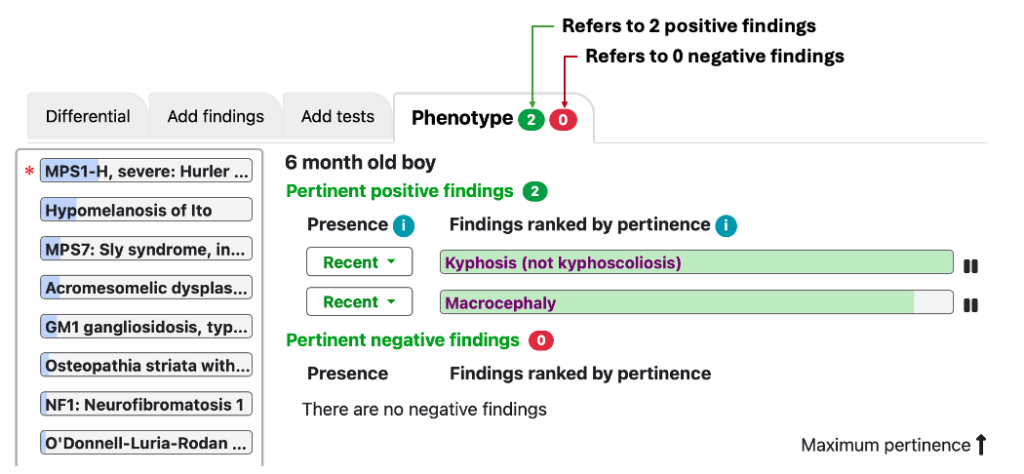Color
Green refers to findings
The color green is used for findings:
- The active finding has a green border.
- Usefulness of commenting on findings is indicated using green shading.
- Pertinence of findings on which you have already commented is indicated using green shading. The concepts of usefulness and pertinence are related: usefulness is forward-looking, and pertinence is post-analysis, backward-looking.
- Options on the top black navigation bar that refer to findings are green.
Blue refers to diseases
The color blue is used for diseases:
- The active disease has a blue border.
- Blue shading represents the probability of each disease in the differential diagnosis.
- Options on the top black navigation bar that refer to diseases are blue.
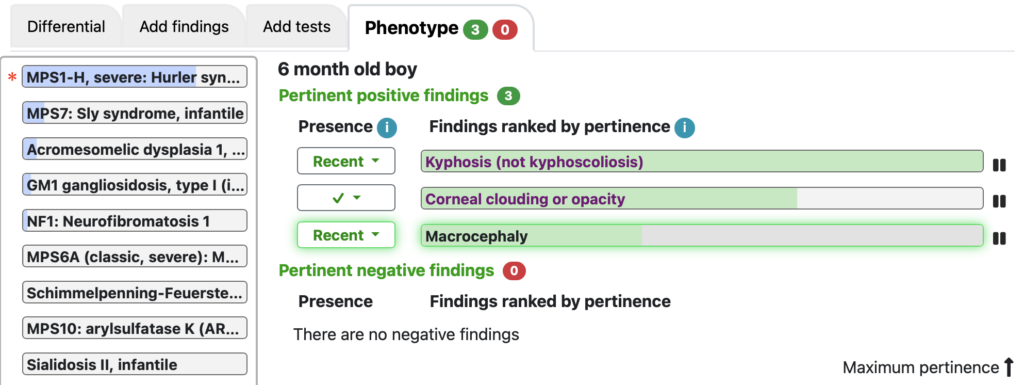
Red refers to warnings
Red refers to two types of warnings.
- Omitted required information (such as age, sex, or units).
- Risks warnings about diseases are indicated with a red asterisk to the left of the disease. Clicking on that asterisk (to the left of MPS1 in the image below) brings up an important warning to consider if MPS1 is in the differential diagnosis.
- Cautions about interpreting findings are indicated with a red asterisk to the left of the finding.
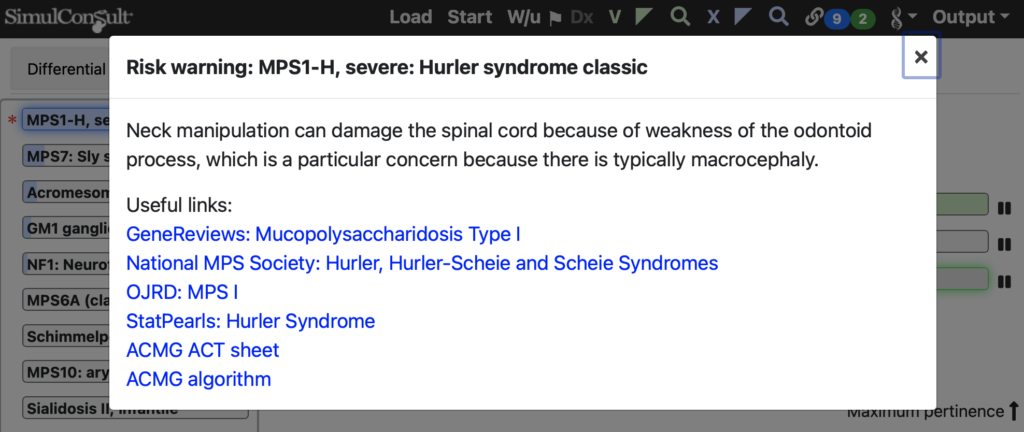
Purple indicates visited links
The text of previously selected findings and diseases, whether or not they were added to the Patient’s Phenotype, will turn purple, helping you track where you have been.
Info buttons in the software
There are info buttons throughout to help you understand the features.
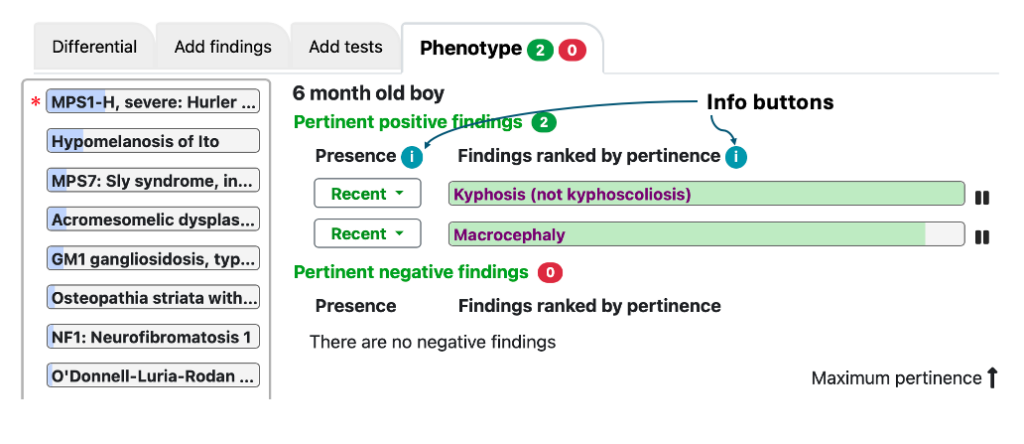
Hover
Hovering over a disease or finding will display the synonyms and explanatory terms.

Active findings or diseases
Clicking on a finding or a disease makes it “active”. You can get just-in-time information about the active selection using links or various screens such as explainability. An active disease or finding is indicated by the “glow” around the selection. Here MPS1 and Macrocephaly are both active.
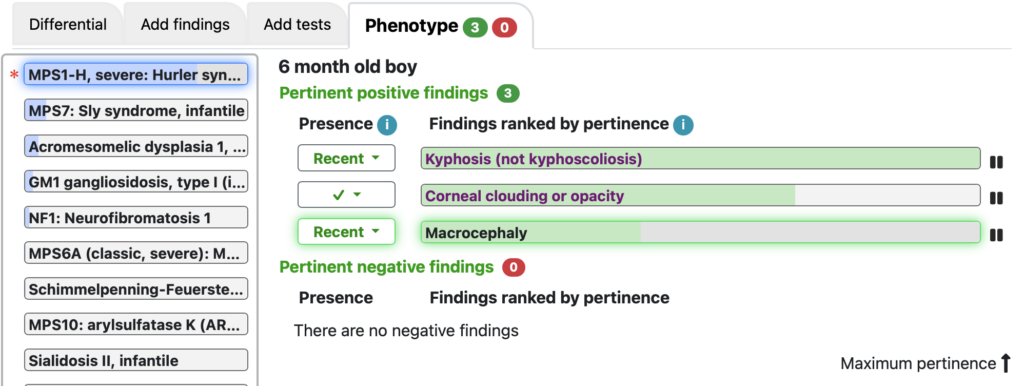
Badges
The badges on the Phenotype tab of the Dx screen are used to keep track of the pertinent positive and negative finding counts.
